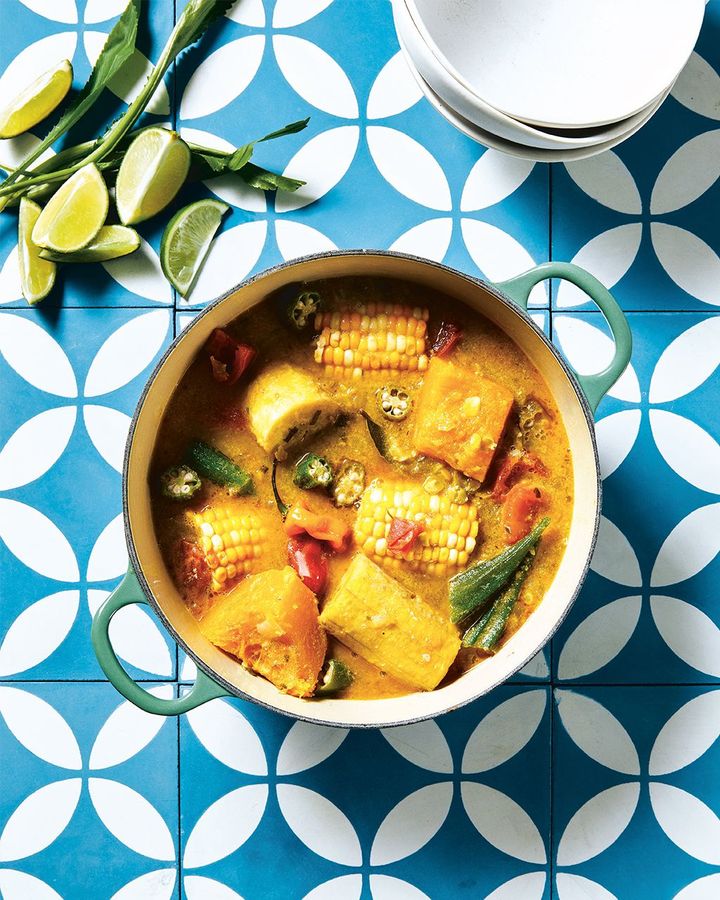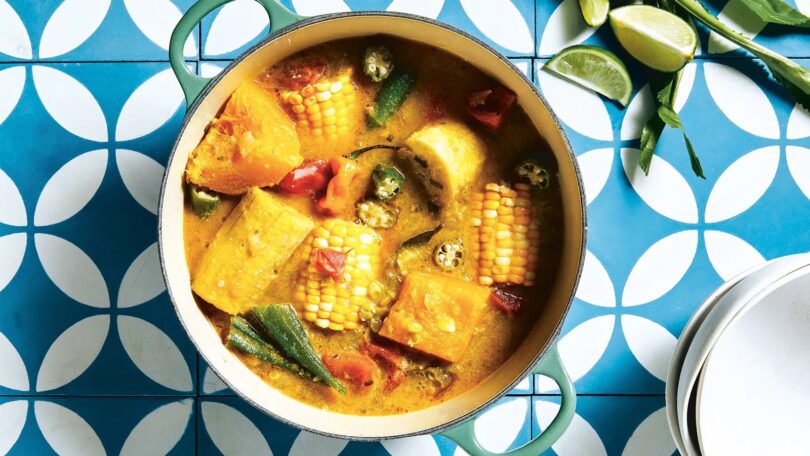Apple Mandy
In Jamaica, there’s nothing more comforting than a bowl of ital. The popular island stew eaten by the Rastafarian community is a medley of fresh vegetables, herbs and spices, all simmered in coconut milk.
Rastafarians are practitioners of Rastafari, a religion founded in Jamaica in the 1930s. It is also classified as a social movement to oppose systems of oppression by the country’s then-dominant British colonial rule.
Historically, as Rastafarians continued to challenge Jamaica’s colonial society by expressing themselves through their African roots, they wore their hair in dreadlocks, which represented a connection to Africa and a sense of pride in African physical characteristics.
They smoked marijuana because they believed its use was directed in biblical passages, and they played reggae music as a voice of the oppressed.
Rastafarians are also vegetarians, preferring to eat a natural diet that’s free from additives. Ital is derived from the word “vital”, meaning to increase one’s liveliness. The ital diet of the Rastafari places an emphasis on one’s spiritual connection with nature, so the food is strictly vegetarian, unprocessed and closely rooted in the land.
For Rastafarians, ital stew is an iconic dish that’s good for the soul. It is loaded with different kinds of vegetables including taro, potatoes, butternut squash, corn, okra and plantains. Since most salt is not allowed in the Rastafarian diet (salt is often artificially modified and therefore not permitted; some Rastafarians may opt to use pure sea salt or kosher salt) flavour is derived from herbs and spices such as garlic, onion, pimento (allspice) and Scotch bonnet chillies. The stew is lightly flavoured yet fully textured. The abundance of vegetables is what makes it really stand out, providing necessary vitamins, minerals, protein and fibre.
Ital stew is no doubt healthy and wholesome, but it’s often overlooked in conversations about healthy recipes because there isn’t a lot of attention focused on cross-cultural nutrition. With this in mind, Brooklyn-based registered dietitian nutritionist Maya Feller saw an opportunity to showcase cultural foods that are prepared from whole, minimally processed ingredients.
“In my clinical experience, there is significant room for modifying food and nutrition recommendations, and there is also space for recommendations that take culturally relevant foods into consideration,” said Feller, author of the book Eating from Our Roots: 80+ Healthy Home-Cooked Favorites from Cultures Around the World, published earlier this year. “If we want to improve nutrition and health outcomes, we need to take ethnicity, culture, heritage, finances, literacy and access into consideration.”
In her book, Feller showcases foods and flavours from around the world. She uses ingredients that are available throughout the US, whether they are fresh, jarred, canned or frozen. “I wanted my readers to experience familiar tastes, as well as have the opportunity to branch out and try something new,” she said. “Some [recipes] are tastes of home, and others use heritage dishes as the starting point and take culinary license for exploration. Each recipe honours the flavours of the region.”
Feller recalls when she first had ital stew as a teenager visiting Saint Elizabeth Parish, located in the south-west of Jamaica. “We rented cottages at a place called Ital Rest, run by Frankie and Jeane, and all of the meals were vegetarian,” she said. The dish intrigued her, and it prompted her to streamline the stew, making it more accessible to home cooks. Feller encourages using canned coconut milk, which cuts down on prep time in the kitchen, and using vegetables that are accessible and affordable to each cook.
Ital stew is such an easy dish to make any time of the week. There is no set rule as to what vegetables you should use, as long as they are easily accessible. There are different recipes for it, and each version depends on who is cooking. “Some versions add beans, while others add dumplings. Depending on the home cook, the recipe and ingredients will change,” Feller said. “I would encourage the home cook to add any vegetable that they like and have access to.”
If you decide to make ital one day, make sure to prep all the vegetables first and slowly add them in increments so they are perfectly cooked. Don’t add all of them at the same time as that is likely to result in a mushy, jumbled and slightly confusing stew. Ital is delicious when it’s freshly cooked, but it’s even better the next day as the vegetables soak in the broth.

Ital stew is such an easy dish to make any time of the week (Credit: Christine Han)
Ital stew recipe
By Maya Feller
Serves 4 to 6
Method
Step 1
In a large heavy-bottomed pot over medium heat, place the yellow onion, green onions, garlic and oil. Cook for 3 to 5 minutes, stirring occasionally and taking care not to burn the garlic, until the garlic is golden. Add 1 cup of water and cook for an additional 5 minutes.
Step 2
Add the broth, coconut milk, pumpkin, split peas, bay leaves and thyme and cook uncovered over medium-high heat for 8 minutes. Next, add the plantains, tomatoes, corn, lemon juice and zest, and salt and simmer over medium heat for 30 minutes.
Step 3
Add the okra and habanero and simmer over low heat for 15 to 20 minutes; discard the bay leaves and thyme sprigs. To serve, spoon the stew into bowls and garnish each with a wedge of lime and fresh coriander leaves.
(Recipe adapted from Eating from Our Roots by Maya Feller, copyright © 2023 by Maya Feller. Published by Goop Press/Rodale Books, an imprint of Penguin Random House, LLC.)
Courtesy: BBC







